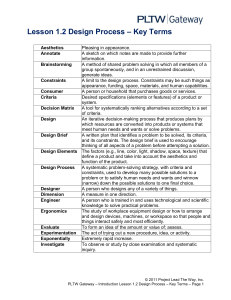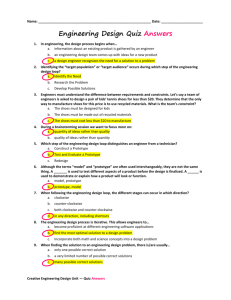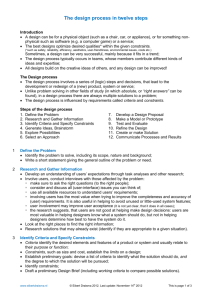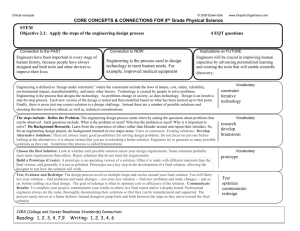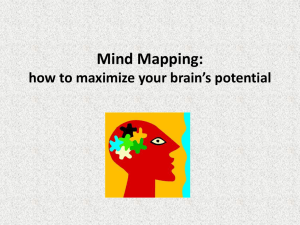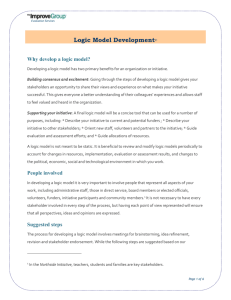1.2 Design Process Key Terms, Objectives, & Concepts
advertisement
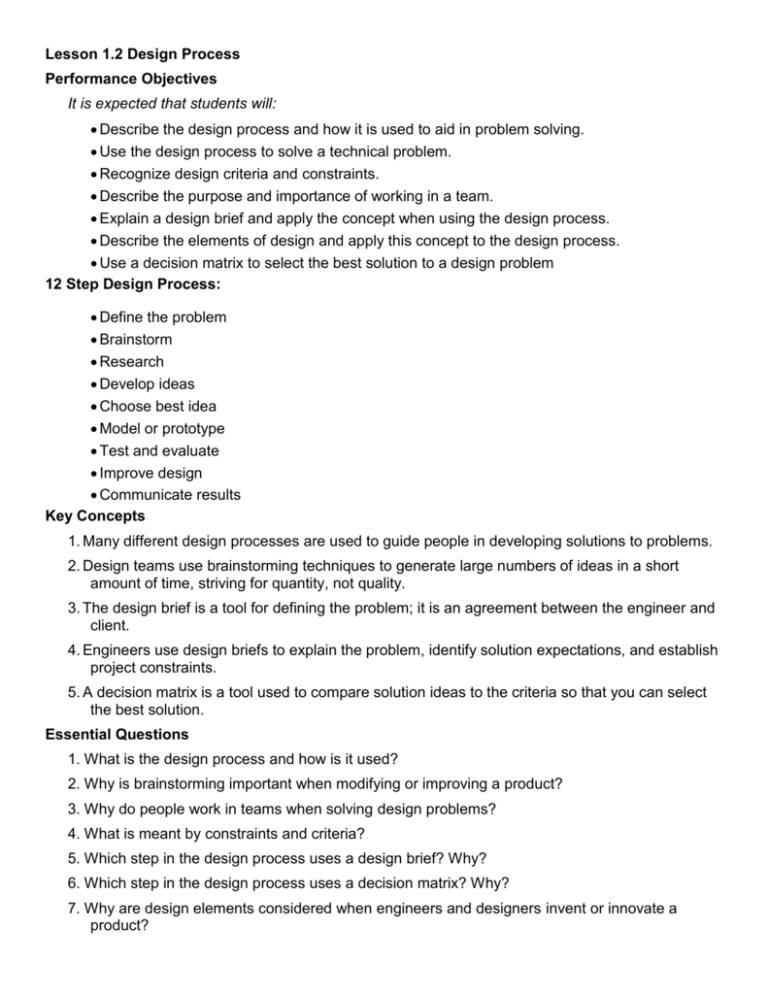
Lesson 1.2 Design Process Performance Objectives It is expected that students will: Describe the design process and how it is used to aid in problem solving. Use the design process to solve a technical problem. Recognize design criteria and constraints. Describe the purpose and importance of working in a team. Explain a design brief and apply the concept when using the design process. Describe the elements of design and apply this concept to the design process. Use a decision matrix to select the best solution to a design problem 12 Step Design Process: Define the problem Brainstorm Research Develop ideas Choose best idea Model or prototype Test and evaluate Improve design Communicate results Key Concepts 1. Many different design processes are used to guide people in developing solutions to problems. 2. Design teams use brainstorming techniques to generate large numbers of ideas in a short amount of time, striving for quantity, not quality. 3. The design brief is a tool for defining the problem; it is an agreement between the engineer and client. 4. Engineers use design briefs to explain the problem, identify solution expectations, and establish project constraints. 5. A decision matrix is a tool used to compare solution ideas to the criteria so that you can select the best solution. Essential Questions 1. What is the design process and how is it used? 2. Why is brainstorming important when modifying or improving a product? 3. Why do people work in teams when solving design problems? 4. What is meant by constraints and criteria? 5. Which step in the design process uses a design brief? Why? 6. Which step in the design process uses a decision matrix? Why? 7. Why are design elements considered when engineers and designers invent or innovate a product? Key Terms Lesson 1.2 Design Process Aesthetics Annotate Brainstorming Constraints Consumer Criteria Decision Matrix Design Design Brief Design Elements Design Process Designer Dimension Engineer Ergonomics Evaluate Experimentation Exponentially Investigate Model Modify Optimize Problem Solving Pleasing in appearance. A sketch on which notes are made to provide further information. A method of shared problem solving in which all members of a group spontaneously, and in an unrestrained discussion, generate ideas. A limit to the design process. Constraints may be such things as appearance, funding, space, materials, and human capabilities. A person or household that purchases goods or services. Desired specifications (elements or features) of a product or system. A tool for systematically ranking alternatives according to a set of criteria. An iterative decision-making process that produces plans by which resources are converted into products or systems that meet human needs and wants or solve problems. A written plan that identifies a problem to be solved, its criteria, and its constraints. The design brief is used to encourage thinking of all aspects of a problem before attempting a solution. The factors (e.g., line, color, light, shadow, space, texture) that define a product and take into account the aesthetics and function of the product. A systematic problem-solving strategy, with criteria and constraints, used to develop many possible solutions to a problem or to satisfy human needs and wants and winnow (narrow) down the possible solutions to one final choice. A person who designs any of a variety of things. A measure in one direction. A person who is trained in and uses technological and scientific knowledge to solve practical problems. The study of workplace equipment design or how to arrange and design devices, machines, or workspace so that people and things interact safely and most efficiently. To form an idea of the amount or value of; assess. The act of trying out a new procedure, idea, or activity. Extremely rapid increase. To observe or study by close examination and systematic inquiry. A visual, mathematical, or three-dimensional representation in detail of an object or design, often smaller than the original. A model is often used to test ideas, make changes to a design, and to learn more about what would happen to a similar, real object. Change to ensure accuracy. An act, process, or methodology used to make a design or system as effective or functional as possible within the given criteria and constraints. The process of understanding a problem, devising a plan, carrying out the plan, and evaluating the plan in order to solve a problem or meet a need or want. Process Prototype Requirements Research Specification Testing Texture Trade-off Visualization Human activities used to create, invent, design, transform, produce, control, maintain, and use products or systems; a sequence of actions that combines resources to produce an output. A full-scale working model used to test a design concept by making actual observations and necessary adjustments. The parameters placed on the development of a product or system. The requirements include the safety needs, the physical laws that will limit the development of an idea, the available resources, the cultural norms, and the use of criteria and constraints. Systematic, scientific, documented study. A detailed description of the design and materials used to make something. A method for collecting data. The feel, appearance, or consistency of a surface, substance, or fabric. An exchange of one thing in return for another; especially relinquishment of one benefit or advantage for another regarded as more desirable. Formation of mental visual images.
